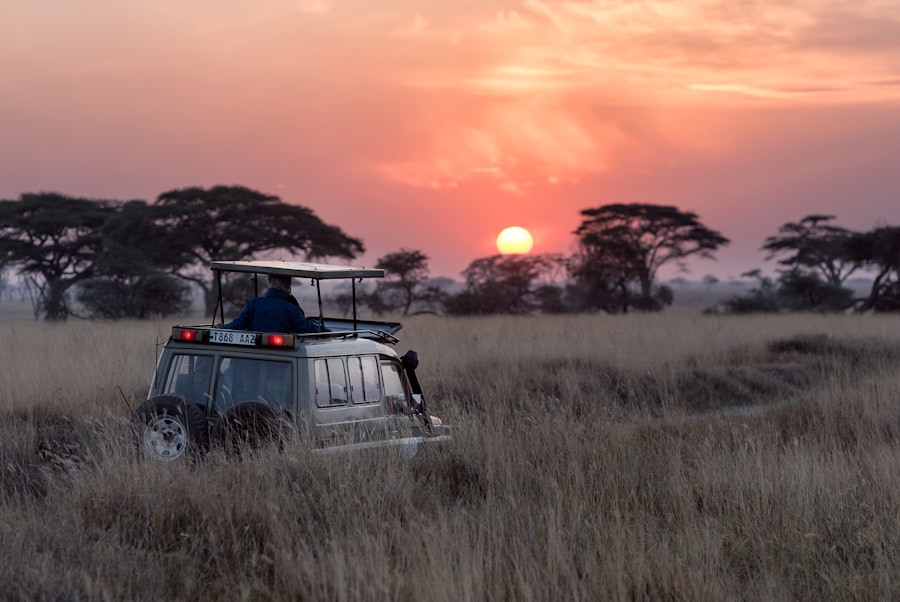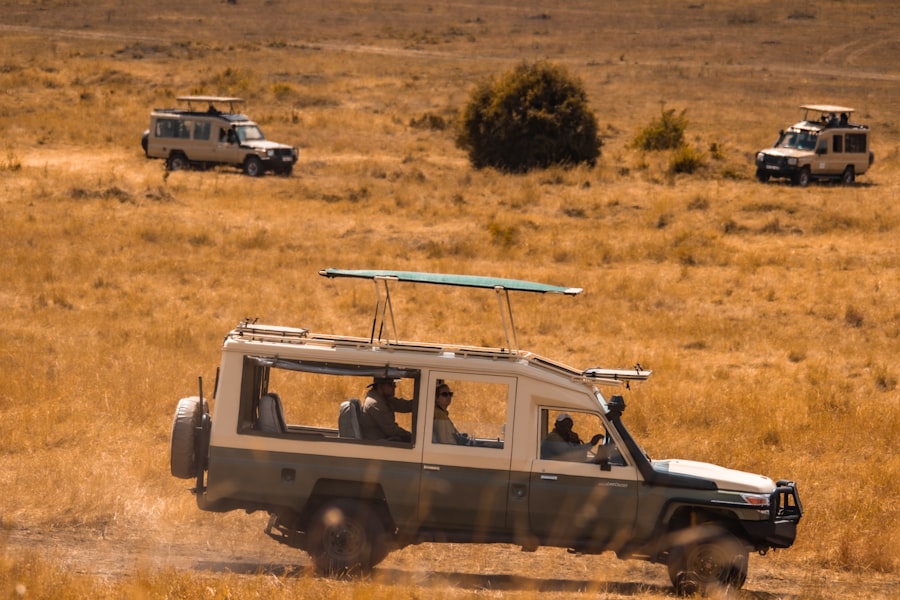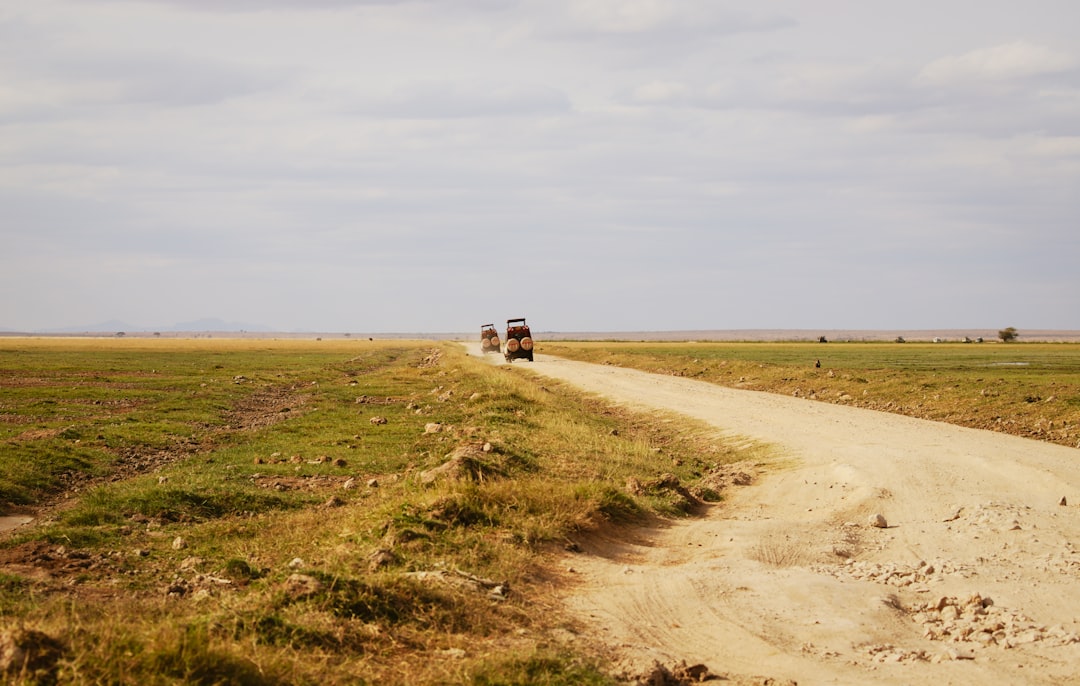Ngorongoro Crater, a UNESCO World Heritage Site, is one of the most remarkable geological formations on Earth. Located in Tanzania, this massive volcanic caldera is often referred to as a “natural zoo” due to its rich biodiversity and the unique ecosystem it supports. The crater, which spans approximately 260 square kilometers, is a haven for wildlife enthusiasts and nature lovers alike.
Its steep walls rise dramatically from the surrounding plains, creating a breathtaking landscape that is both awe-inspiring and humbling. The crater’s floor is a mosaic of grasslands, swamps, and forests, providing a variety of habitats for an array of species. The Ngorongoro Crater is not just a stunning natural wonder; it also holds significant cultural and historical importance.
The Maasai people, who have coexisted with the wildlife for centuries, consider this area sacred. Their traditional pastoral lifestyle continues to thrive alongside conservation efforts, creating a unique blend of human and wildlife interaction. Visitors to the crater are not only treated to spectacular views and wildlife sightings but also an opportunity to engage with the rich cultural heritage of the Maasai community.
Key Takeaways
- Ngorongoro Crater is a UNESCO World Heritage Site and one of the most iconic natural attractions in Tanzania, known for its stunning landscape and diverse wildlife.
- The crater was formed over 2 million years ago from a volcanic eruption, and its unique ecosystem supports a wide variety of flora and fauna.
- Visitors to Ngorongoro Crater can expect to see the “Big Five” (lion, elephant, buffalo, leopard, and rhinoceros) as well as a multitude of other species in their natural habitat.
- The best time to visit Ngorongoro Crater is during the dry season (June to September) when wildlife viewing is at its best, although the crater is accessible year-round.
- Popular activities in Ngorongoro Crater include game drives, guided walks, and cultural visits to Maasai villages, while accommodations range from luxury lodges to camping sites with basic facilities.
History and Formation of the Crater
The formation of Ngorongoro Crater is a fascinating tale of geological processes that took place over millions of years. It is believed that the crater was formed around two to three million years ago when a massive volcano erupted and subsequently collapsed in on itself. This caldera formation is one of the largest in the world, with its walls rising about 600 meters above the crater floor.
The geological activity that created the crater has also contributed to its rich soil, which supports diverse flora and fauna. The history of human habitation in the Ngorongoro region dates back thousands of years. Archaeological evidence suggests that early hominids roamed this area, with tools and artifacts found in nearby sites like Olduvai Gorge.
The Maasai people began migrating into the region in the 17th century, bringing their cattle and establishing a pastoral lifestyle that continues to this day. The coexistence of the Maasai with the wildlife in the crater has shaped both the cultural landscape and the ecological balance of the area, making it a unique example of sustainable living.
Wildlife and Ecology in the Crater

Ngorongoro Crater is renowned for its incredible wildlife diversity, hosting an estimated 25,000 large animals within its confines. The crater’s unique ecosystem supports a variety of species, including the Big Five: lions, elephants, buffaloes, leopards, and rhinoceroses. The presence of these iconic animals makes Ngorongoro a prime destination for safari enthusiasts.
The crater’s relatively small size allows for high concentrations of wildlife, making sightings more frequent and accessible compared to other national parks. The ecological dynamics within the crater are complex and fascinating. The diverse habitats range from open grasslands to dense forests and wetlands, each supporting different species.
For instance, the grasslands are home to large herds of wildebeest and zebras, while the forests provide shelter for primates and various bird species. The crater also features a soda lake that attracts flamingos and other waterfowl, adding to its ecological richness. This variety not only enhances the visitor experience but also plays a crucial role in maintaining the health of the ecosystem.
Best Time to Visit Ngorongoro Crater
Determining the best time to visit Ngorongoro Crater depends largely on what visitors hope to experience during their trip. The dry season, which typically runs from June to October, is often considered the prime time for wildlife viewing. During these months, animals congregate around water sources, making them easier to spot.
The clear skies and cooler temperatures also enhance visibility and comfort for visitors exploring the crater. Conversely, the wet season from November to May offers its own unique advantages. While some areas may become muddy and challenging to navigate, this period brings lush greenery and vibrant landscapes that are particularly stunning for photography.
Additionally, many animals give birth during this time, providing opportunities to witness young wildlife in their natural habitats. Birdwatchers will also find this season rewarding as migratory birds flock to the area, adding color and life to the already diverse avian population.
Activities and Attractions in Ngorongoro Crater
Visitors to Ngorongoro Crater can engage in a variety of activities that cater to different interests and preferences. One of the most popular activities is game driving, where visitors can embark on guided safaris through the crater floor. These excursions provide an intimate look at the wildlife as they roam freely in their natural habitat.
Knowledgeable guides enhance the experience by sharing insights about animal behavior, ecology, and conservation efforts. In addition to game drives, hiking opportunities abound in the surrounding highlands. Trails lead through lush forests and offer panoramic views of the crater below.
For those interested in cultural experiences, visiting a Maasai village provides insight into their traditional way of life.
Furthermore, birdwatching enthusiasts can explore various habitats within the crater to spot numerous species, including raptors and migratory birds.
Accommodation and Facilities in the Area

Accommodations around Ngorongoro Crater cater to a range of preferences and budgets, ensuring that visitors can find suitable lodging for their stay. Options range from luxury lodges perched on the crater rim with stunning views to more modest campsites that offer a closer connection to nature. Many lodges provide all-inclusive packages that include meals, guided tours, and transportation to and from the crater.
Facilities within the area are designed to enhance visitor comfort while minimizing environmental impact. Many lodges incorporate sustainable practices such as solar energy and water conservation systems. Additionally, there are picnic sites within the crater where visitors can enjoy meals surrounded by breathtaking scenery.
The presence of well-maintained roads ensures easy access to various attractions within the crater and surrounding areas.
Conservation Efforts in Ngorongoro Crater
Conservation efforts in Ngorongoro Crater are vital for preserving its unique ecosystem and ensuring that future generations can enjoy its beauty. The Ngorongoro Conservation Area Authority (NCAA) plays a crucial role in managing both wildlife conservation and human activities within the region. This dual mandate allows for sustainable coexistence between local communities and wildlife populations.
One significant aspect of conservation in Ngorongoro is community involvement. The Maasai people are integral to conservation efforts as they have lived alongside wildlife for centuries. Programs aimed at educating local communities about sustainable practices help foster a sense of stewardship over natural resources.
Tips for Exploring Ngorongoro Crater
Exploring Ngorongoro Crater can be an unforgettable experience if visitors come prepared with some essential tips. First and foremost, it is advisable to book guided tours with reputable operators who have extensive knowledge of the area. Experienced guides can enhance wildlife viewing opportunities by knowing where animals are likely to be found at different times of day.
Another important consideration is timing visits within the day. Early morning game drives often yield the best sightings as animals are more active during cooler temperatures. Additionally, bringing binoculars can significantly enhance wildlife observation experiences by allowing visitors to spot animals from a distance without disturbing them.
Lastly, respecting local customs and wildlife regulations is crucial for ensuring a positive experience for both visitors and local communities. Observing guidelines regarding distance from animals helps minimize stress on wildlife while promoting responsible tourism practices that benefit conservation efforts in Ngorongoro Crater.
